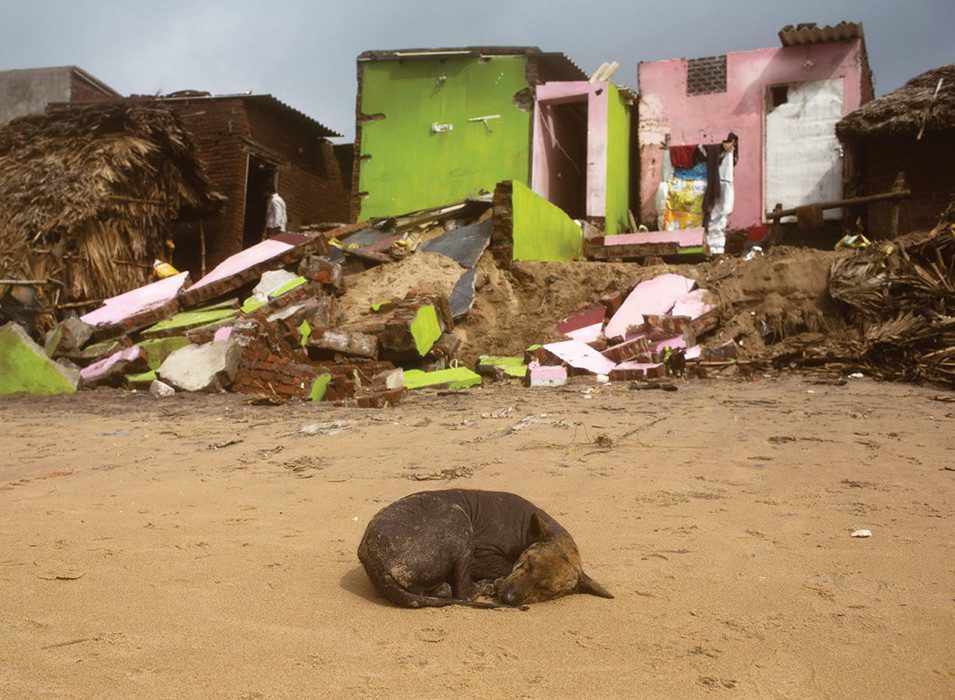While the evacuation process in the wake of Cyclone Phailin has been laudable, the battle of rehabilitation has just begun. By Rohit Roy.
This October witnessed yet another devastating cyclone hitting the east coast of India – Cyclone Phailin. Before the cyclone made landfall, the meteorological department feared they might have a super cyclone (sustained wind speeds of more than 220 km/h) in their hands. Their prediction almost came true with the cyclone reaching wind speeds of 200 km/h at landfall.
The last time such a cyclone hit the eastern coast was the Orissa super cyclone in 1999 leaving behind a trail of destruction with 10,000 people dead and $4.5 billion in damages. Following that disaster the Odisha government, set up the Odisha State Disaster Management Authority (OSDMA) and that has paid dividends in the face of Phailin. It is not often that this column finds the opportunity to praise a governmental authority (nor do they often learn their lessons), but in this case it would be severely ungracious not to do so.
This has been nothing less than a monumental and beautifully coordinated management of the cyclone by a host of state agencies. The Indian Meteorological Department’s early warnings, the OSDMA’s evacuation procedures and the extremely effective rescue operations of the armed forces, the coast guard and the National Disaster Response Force (NDRF), have all set an extremely high and unprecedented standard in disaster management in India.
Since the 1999 cyclone, the OSDMA and the National Cyclone Risk Mitigation Project (NCRMP) have planned for such an eventuality, constructing disaster risk mitigation infrastructure, evacuation protocols, and working with communities and local organisations in setting up volunteer teams. As a result, the evacuation efforts were nothing less than miraculous. Consider the numbers.
This has been the largest evacuation of its kind in India. 1 million people were evacuated within the space of 3 days, some from the remotest of villages. This was also testament to the dichotomous conditions of Indian rural life where transportation reaching the remotest villages is often problematic (especially for disaster management) and yet the mobile networks and infrastructure are so well placed that these same villages were constantly kept abreast of the situation by the authorities. With almost everyone either having a mobile phone or at the very least having access to one, the authorities were able to effectively coordinate the evacuation through messaging services.
The deployment of personnel has also been impressive. The Army, Navy, coast guard and the NDRF were on alert with the NDRF reporting that 1,200 personnel had been deployed to Odisha and 500 to Andhra Pradesh. Army helicopters were also on standby in neighbouring West Bengal.
It is little wonder then that there appears to be a general sense of relief the loss of life has been kept to a minimum. This of course, in no way belittles the 45 people reported dead. Any loss of life is extremely regrettable. However, in the face of a natural disaster of such magnitude with over a million people evacuated, the authorities cannot be blamed for heaving a sigh of relief for averting a death toll similar to the 1999 cyclone.
The work however, is only just beginning. The aftermath of the cyclone has left almost 12 million people affected directly. Loss of property is estimated to be about $320 million. Paddy fields have been left devastated, affecting the farmers of an already impoverished region of the country. The betel leaf industry has been severely affected and an estimated 2.6 million trees have been uprooted, decimating forest areas in the region. It will take this region, years to recover. Let us hope the efficiency of the authorities in this case does not wane from the excellent work they put in during the cyclone.














